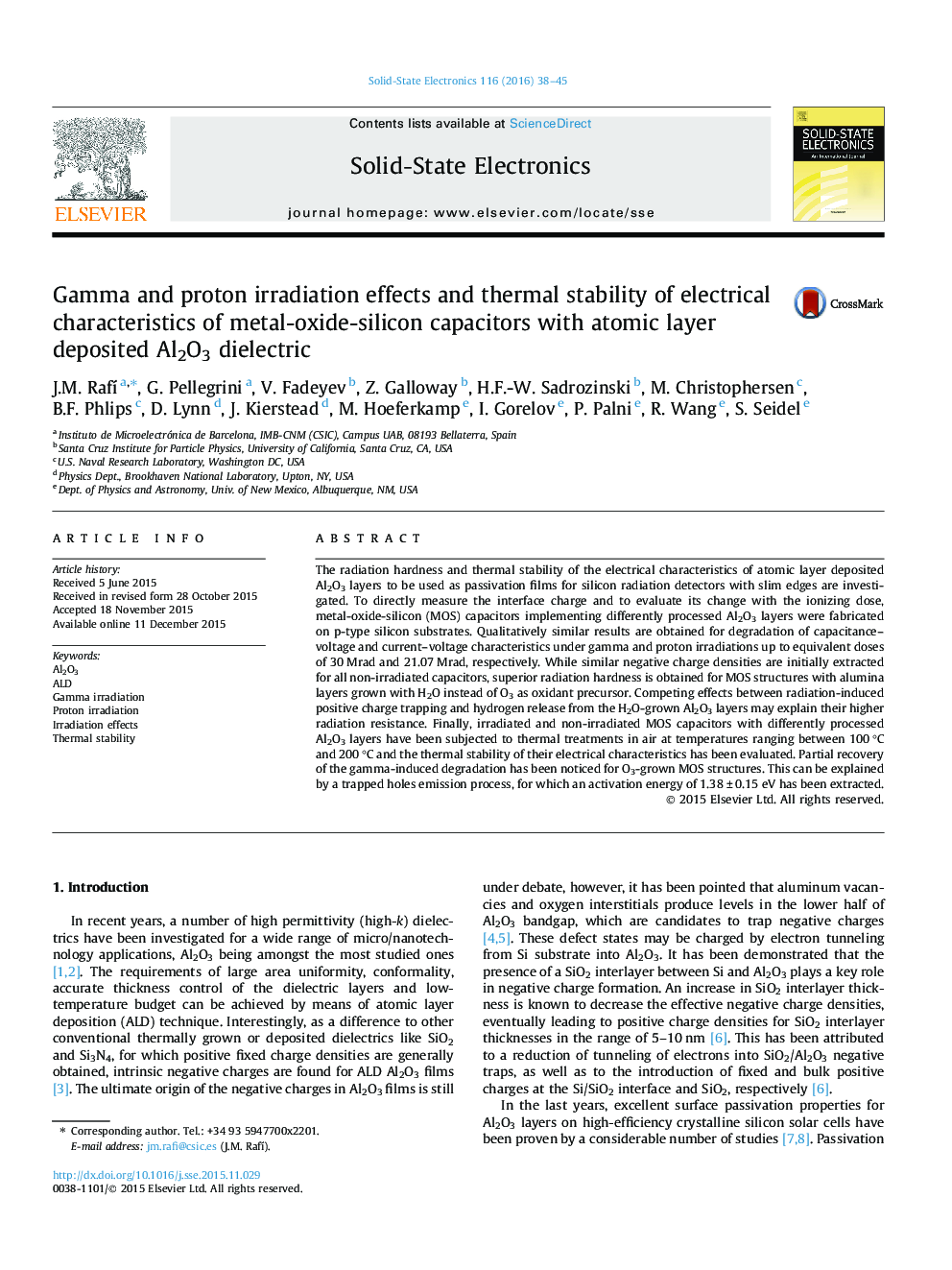| Article ID | Journal | Published Year | Pages | File Type |
|---|---|---|---|---|
| 7150892 | Solid-State Electronics | 2016 | 8 Pages |
Abstract
The radiation hardness and thermal stability of the electrical characteristics of atomic layer deposited Al2O3 layers to be used as passivation films for silicon radiation detectors with slim edges are investigated. To directly measure the interface charge and to evaluate its change with the ionizing dose, metal-oxide-silicon (MOS) capacitors implementing differently processed Al2O3 layers were fabricated on p-type silicon substrates. Qualitatively similar results are obtained for degradation of capacitance-voltage and current-voltage characteristics under gamma and proton irradiations up to equivalent doses of 30 Mrad and 21.07 Mrad, respectively. While similar negative charge densities are initially extracted for all non-irradiated capacitors, superior radiation hardness is obtained for MOS structures with alumina layers grown with H2O instead of O3 as oxidant precursor. Competing effects between radiation-induced positive charge trapping and hydrogen release from the H2O-grown Al2O3 layers may explain their higher radiation resistance. Finally, irradiated and non-irradiated MOS capacitors with differently processed Al2O3 layers have been subjected to thermal treatments in air at temperatures ranging between 100 °C and 200 °C and the thermal stability of their electrical characteristics has been evaluated. Partial recovery of the gamma-induced degradation has been noticed for O3-grown MOS structures. This can be explained by a trapped holes emission process, for which an activation energy of 1.38 ± 0.15 eV has been extracted.
Related Topics
Physical Sciences and Engineering
Engineering
Electrical and Electronic Engineering
Authors
J.M. RafÃ, G. Pellegrini, V. Fadeyev, Z. Galloway, H.F.-W. Sadrozinski, M. Christophersen, B.F. Phlips, D. Lynn, J. Kierstead, M. Hoeferkamp, I. Gorelov, P. Palni, R. Wang, S. Seidel,
